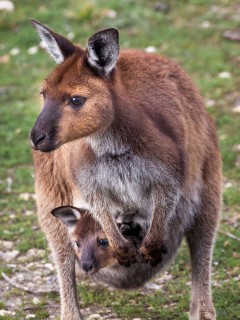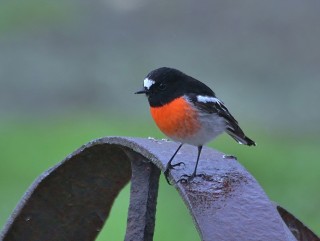Spring (September to November) is a wonderful time to explore Kangaroo Island with the first taste of spring really starting in August. The staff at Kangaroo Island Trails is excited at this time of year as you'll see animals coming out and plants sprouting with the warmer weather. Average spring temperatures are 19°C (66°F) maximum and 11°C(52°F) minimum.
To experience Kangaroo Island's renowned wildlife at its best might take a little patience, planning and some local knowledge. Animals can be found all year round but most come out to feed and play at night. In spring, Kangaroo and Tammar Wallaby joeys (young) are exploring the world outside their mother's pouch, only returning to feed. Echidnas also have young and Pygmy Possums are waking up from their winter torpor. The smallest is the Little Pygmy Possum at just 10 grams. Keep your eyes open on our Kangaroo Island Scenic Tour as you are bound to see some wildlife in their natural habitat along the way.
Hatchlings of Rosenberg's Goanna begin to excavate their escape tunnel from termite mounds where they laid their eggs. The 2cm long, bright Green Carpenter Bees are storing pollen and nectar in brood cells to feed their young. Flocks of non-breeding Glossy Black-cockatoos are feeding in the she-oak groves along the coast at Penneshaw and further along the north coast to Stokes Bay. There are also 15 small lizards.
Keep an eye out for Tiger snakes and, more rarely, Pygmy Copperhead snakes as both are venomous.
Birds are singing to find a mate and to establish their territory. KI coastal raptors – White-bellied Sea-eagles, Eastern Ospreys and Peregrine Falcons – are positive indicators of our unspoiled environment and wilderness values. Migratory shorebirds such as the Common Greenshank, Eastern Curlew, Sharp Tailed Sandpipers, Red Necked Stints and Ruddy Turnstone, Short-tailed Shearwaters (Muttonbirds) interspersed with white Australasian Gannets,begin arriving in August. Hooded Dotterels are found across many of the sandy beaches and can be safely viewed from a distance with binoculars. Little Penguin fledglings are leaving nests. At the end of the breeding season (mid to late November), these birds go to sea to build body fat before moulting.
Wildflowers and orchids are blooming in a gorgeous display, fungi are popping through the leaf litter, birds and wildlife are active, the creeks are flowing, sometimes over waterfalls, and the temperature is kind.



